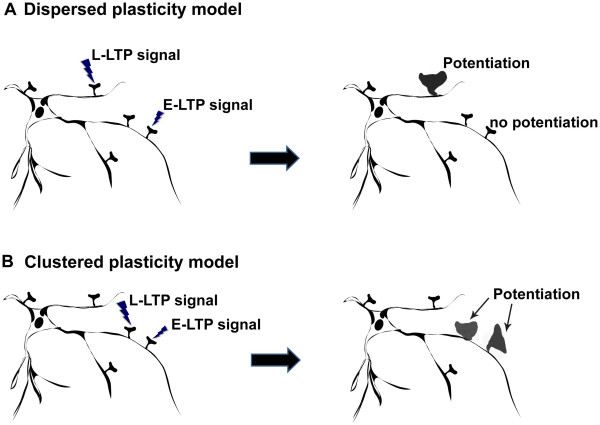Figure 6.
Two models of synaptic plasticity. Synaptic stimulation that induces long-term LTP (L-LTP stimulation) promotes the expression of Plasticity Related Proteins (PRPs), but stimulation that induces only early-phase LTP (E-LTP) does not. A recent hypothesis has suggested that activated synapses become labeled or ‘tagged’ by certain molecules (though the identity of these molecules is currently unclear). It has been proposed that once PRPs reach an activated synapse, the molecular ‘tags’ can capture the PRPs and in turn mediate the induction of L-LTP even when the synapse only receives E-LTP stimulation. This is called the Synaptic Tagging and Capture theory. Now the theory has generated two models to take into account the spatial localization of participating synapses. A. Dispersed plasticity model. In the model, there is no significant bias in the distribution of activated synapses among the dendritic branches of a single neuron within the PRPs expression time window. Therefore, most of the time PRPs may not be able to reach other potentiated synapses within the time window. B. Clustered plasticity model. If the activated synapses tend to be in close proximity to each other within the time window, PRPs can translocate to other potentiated synapses to induce L-LTP. The model also predicts a non-linear increase in the probability of neuronal firing by sharing molecules that facilitate the firing among clustered synapses (not shown here). Note that for illustrative purposes, L-LTP is depicted as an increase in the size of a synapse.

